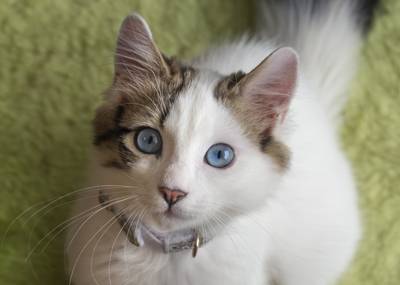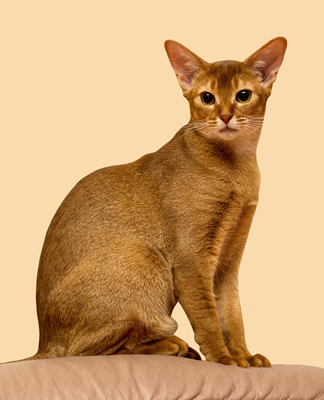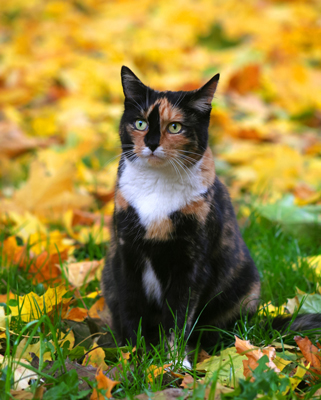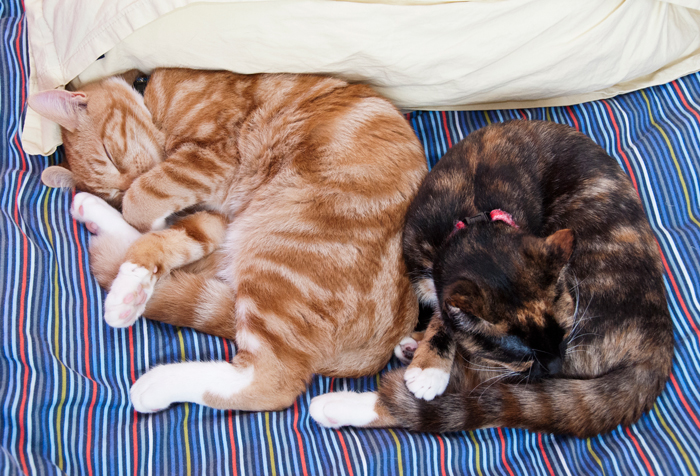Cats’ fur colors, markings and patterns explained.

Photo credit: Esin Deniz/Adobe Stock
Have you ever wondered how your cat ended up with her beautiful markings? Maybe she has dark paws, dark ears and a dark tail like a Siamese cat, or perhaps her coat features lovely patches of white, black and red. She might even have extra toes on her paws, like many of Ernest Hemingway’s cats. Just as you might have inherited your blue eyes from your mom or dad, your cat received the genes for her good looks from her parents.
Remember the basic genetic overview you received in high school biology? A child receives two copies of a gene from his parents—one from his mother and one from his father. These genes can be either dominant or recessive. If the child receives two dominant genes, or a dominant gene and a recessive gene, the dominant trait will show. If he receives two recessive genes, the recessive trait will show.
The same holds true with the genes a kitten receives from his father and mother. While cats come in a wide range of colors, that rainbow of fur is derived from just two main colors: black and red (e.g., orange).
“All other colors are variations of black and red with the exception of solid white,” said Beth Hicks, an all-breed judge for The International Cat Association (TICA). “White is a masking gene. It hides (masks) all other color. So a solid white cat is either black or red but the color is hidden by the white.”

Photo credit: e_polischuk/Adobe Stock
Different modifying genes can change the two basic colors resulting in what are called “dilute” colors, Hicks added.
“Red can change to cream,” she said. “Black can change to blue, chocolate, cinnamon, lilac or fawn.”
These colors are also known by other names:
- Red: orange, rust, marmalade, yellow, ginger
- Cream: buff
- Chocolate, seal: brown
- Cinnamon: light brown
- Blue, silver: gray
- Lilac, fawn: light gray
All of these colors can appear with different patterns, which are determined by other genes.
“The three most common patterns in cats are solid, tabby and pointed,” Hicks said.
She described the patterns as follows:
- Solid: one color without stripes
- Tabby: striped patterns; four different patterns are possible
- Pointed: color appears on only the face, feet and tail. Points can be solid or tabby

Photo credit: farbkombinat
Hicks noted that all colors and patterns can have some white. The white markings—often appearing as mittens, boots, lockets or other patches of white—are caused by a “white-spotting” gene. Similar to the white masking gene (which removes all color), this gene hides some of a cat’s color and pattern.
The same white spotting gene can also contribute to the unique patched coat of calico cats. These cats have the genes for both black and red color as well as the white spotting gene. The majority of calico cats are female because of genetics.
“In cats, the red and black colors are on the X chromosome,” Hicks explained.
Because females carry two X chromosomes and males carry only one X chromosome, the likelihood of a cat receiving both black and red genes is much higher with a female cat.
The genes that determine color and pattern apply to all breeds of cat, including mixed-breeds. Obviously, some breeds have evolved over time to carry only certain color or pattern genes—a good example is the Siamese, which displays only the pointed pattern.
Even so, “It is not color and pattern that determine a cat’s breed,” Hicks explained. “That is established by the physical characteristics described in each breed’s standard. Just as all pointed cats are not Siamese, all longhaired cats are not Persians and all tailless cats are not Manx, all blue cats are not Russian Blues.”
About the Author: Stacy N. Hackett is an award-winning writer with more than 25 years’ experience in the pet industry. She is the former editor of Pet Product News and a former staff editor with Cat Fancy, Cats USA, Critters USA and Ferrets USA. To learn more about her work, visit stacynhackett.vpweb.com.





